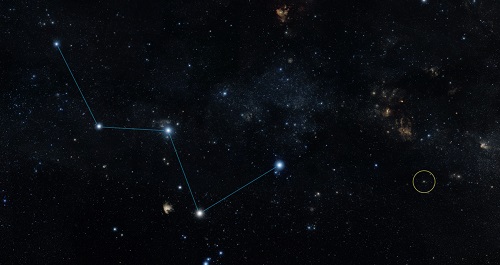Astronomers from the University of St Andrews and the University of Edinburgh have today (Friday July 31) announced the discovery of a new super-Earth.
Tucked next to one leg of the W-shaped star pattern of Cassiopeia the Queen lies a modest 5th-magnitude star named HD 219134 that has been hiding a secret.
Astronomers have now teased out that secret: a planet in a 3-day orbit that transits, or crosses in front of its star.

At a distance of just 21 light-years, it is by far the closest transiting planet to Earth.
It is the nearest rocky planet confirmed outside our solar system. Its host star is visible to the unaided eye from dark skies, meaning anyone with a good star map can see this record-breaking system.
“Its proximity makes HD 219134 ideal for future studies. The James Webb Space Telescope and future large ground-based observatories are sure to point at it and examine it in detail,” said lead author Fatemeh (Ati) Motalebi of the Geneva Observatory.
The newfound world, designated HD 219134b, was discovered using the HARPS-North instrument on the 3.6-meter Telescopio Nazionale Galileo in the Canary Islands.
HARPS-North detects planets using the radial velocity method, which allows astronomers to measure a planet’s mass.
HD 219134b weighs 4.5 times the mass of Earth, making it a super-Earth.

With such a close orbit, researchers realized that there was good possibility the planet would transit its star.
Annelies Mortier of the University of St Andrews’ School of Physics and Astronomy said:
“For a planet like this one, orbiting at a distance ten times the radius of its parent star, the chances of transits occurring are better than 1-in-10, so it was well worth looking.”
In April of this year they targeted the system with NASA’s Spitzer Space Telescope. At the appropriate time, the star dimmed slightly as the planet crossed the star’s face. Measuring the depth of the transit gave the planet’s size, which is 1.6 times Earth. As a result, the team can calculate the planet’s density, which works out to about 6 g/cm3. This shows that HD 219134b is a rocky world.
HD 219134 was one of the closest stars in the sample, so it was particularly lucky to find that it hosts a transiting planet. This system now holds the record for the nearest transiting exoplanet. As such, it likely will be a favourite for researchers for years to come.

